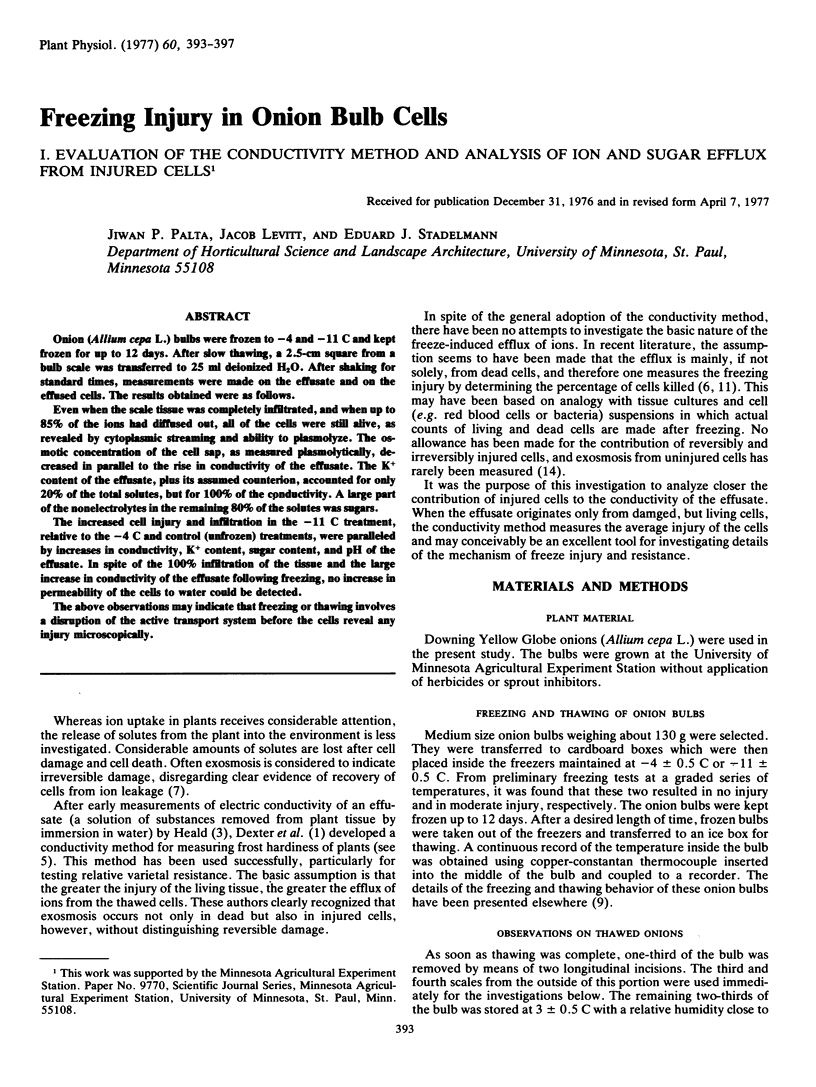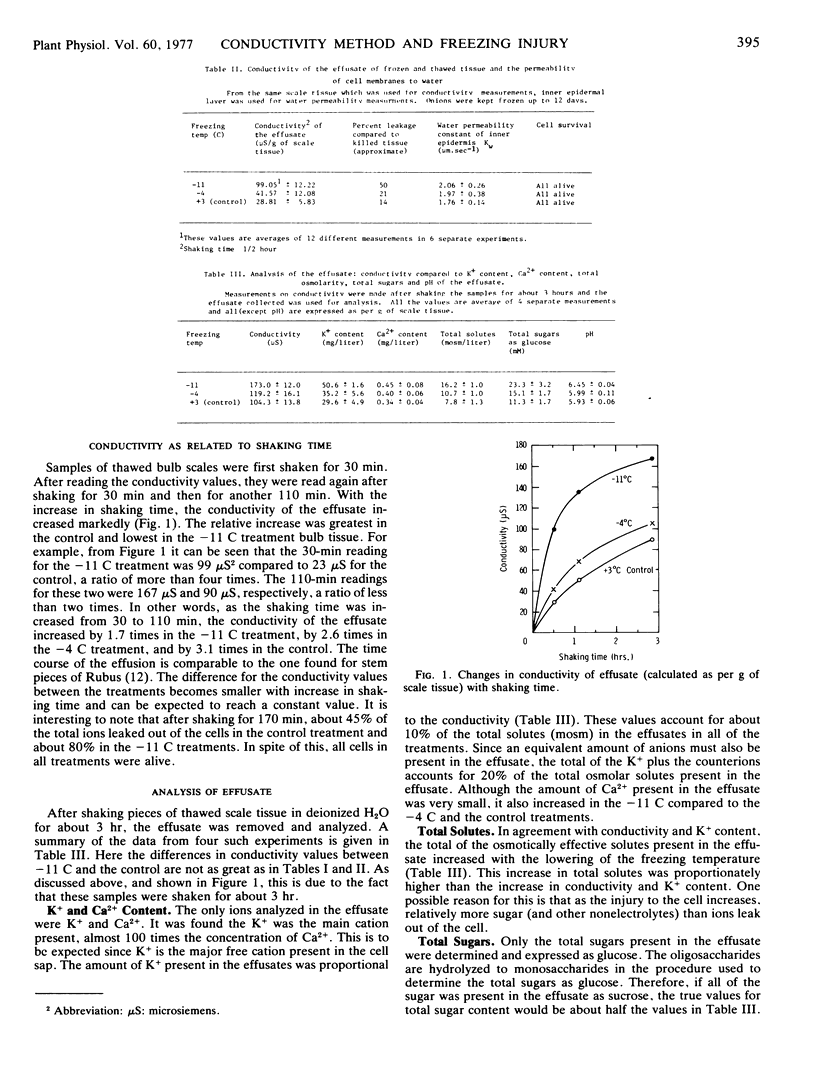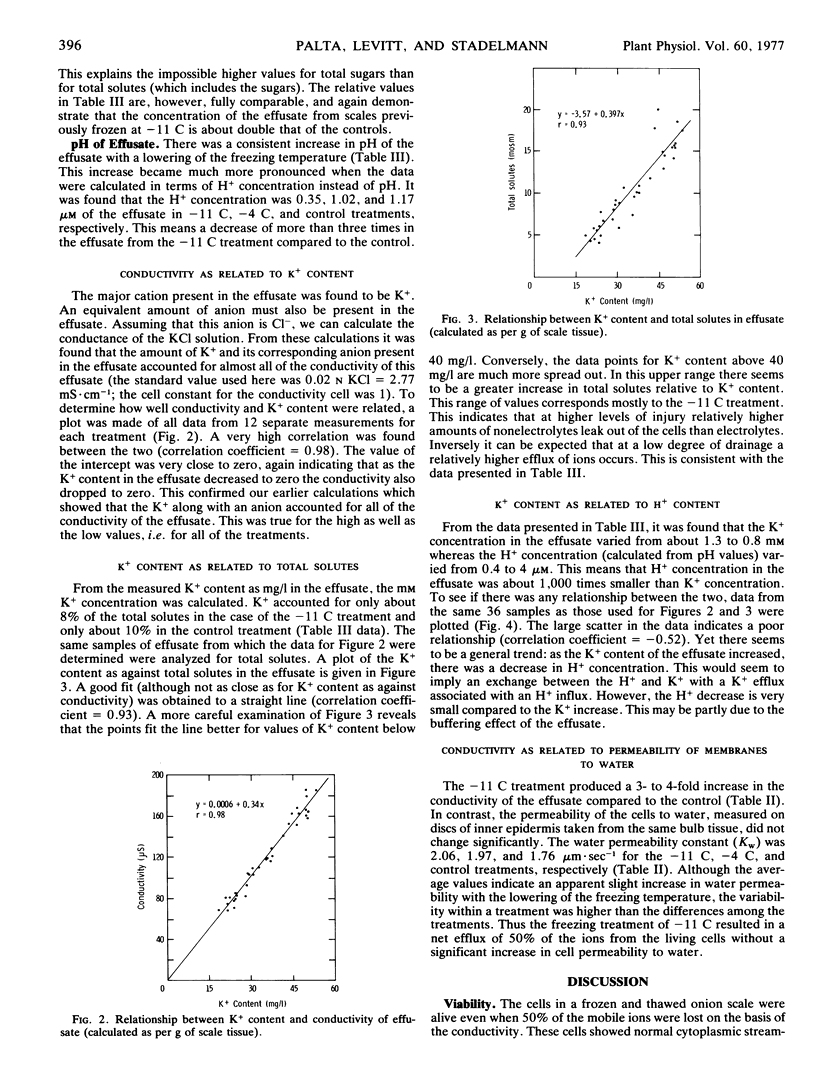Abstract
Onion (Allium cepa L.) bulbs were frozen to −4 and −11 C and kept frozen for up to 12 days. After slow thawing, a 2.5-cm square from a bulb scale was transferred to 25 ml deionized H2O. After shaking for standard times, measurements were made on the effusate and on the effused cells. The results obtained were as follows.
Even when the scale tissue was completely infiltrated, and when up to 85% of the ions had diffused out, all of the cells were still alive, as revealed by cytoplasmic streaming and ability to plasmolyze. The osmotic concentration of the cell sap, as measured plasmolytically, decreased in parallel to the rise in conductivity of the effusate. The K+ content of the effusate, plus its assumed counterion, accounted for only 20% of the total solutes, but for 100% of the conductivity. A large part of the nonelectrolytes in the remaining 80% of the solutes was sugars.
The increased cell injury and infiltration in the −11 C treatment, relative to the −4 C and control (unfrozen) treatments, were paralleled by increases in conductivity, K+ content, sugar content, and pH of the effusate. In spite of the 100% infiltration of the tissue and the large increase in conductivity of the effusate following freezing, no increase in permeability of the cells to water could be detected.
The above observations may indicate that freezing or thawing involves a disruption of the active transport system before the cells reveal any injury microscopically.
Full text
PDF




Selected References
These references are in PubMed. This may not be the complete list of references from this article.
- DUBOIS M., GILLES K., HAMILTON J. K., REBERS P. A., SMITH F. A colorimetric method for the determination of sugars. Nature. 1951 Jul 28;168(4265):167–167. doi: 10.1038/168167a0. [DOI] [PubMed] [Google Scholar]
- Dexter S. T., Tottingham W. E., Graber L. F. INVESTIGATIONS OF THE HARDINESS OF PLANTS BY MEASUREMENT OF ELECTRICAL CONDUCTIVITY. Plant Physiol. 1932 Jan;7(1):63–78. doi: 10.1104/pp.7.1.63. [DOI] [PMC free article] [PubMed] [Google Scholar]
- Palta J. P., Levitt J., Stadelmann E. J. Freezing Injury in Onion Bulb Cells: II. Post-thawing Injury or Recovery. Plant Physiol. 1977 Sep;60(3):398–401. doi: 10.1104/pp.60.3.398. [DOI] [PMC free article] [PubMed] [Google Scholar]
- Palta J. P., Stadelmann E. J. Effect of turgor pressure on water permeability of Allium cepa epidermis cell membranes. J Membr Biol. 1977 May 12;33(3-4):231–247. doi: 10.1007/BF01869518. [DOI] [PubMed] [Google Scholar]


